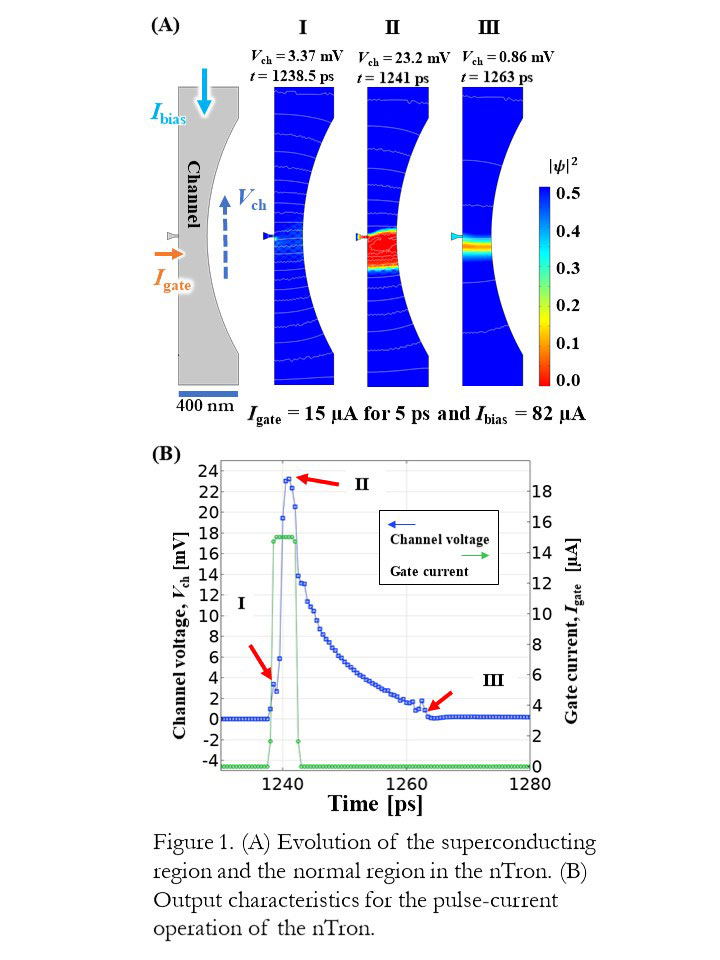ED-3-4
Ginzburg-Landau simulation of pulse-current operations of a superconducting-nanowire cryotron
16:15-16:30 28/11/2023
*Naoki Yasukawaa, Taichiro Nishioa, and Yasunori Mawatarib
a. Department of Physics, Tokyo University of Science, Tokyo, 162-8601, Japan.
b. National Institute of Advanced Industrial Science and Technology (AIST),Tsukuba, 305-8568, Japan.
It is expected to realize super high-performance hybrid devices which combine superconducting single flux quantum (SFQ) circuits and complementary metal oxide semiconductor (CMOS) circuits. In these hybrid devices, a superconducting nanowire cryotron (nTron) [1] is used to amplify signals from the SFQ circuits, but detailed research on operations of the nTron has not yet been done. Therefore, we simulated the pulse-wave response of the nTron to understand the behavior of channel state when a pulse current was injected from the gate.
We used the finite element method to solve the time-dependent Ginzburg-Landau (TDGL) equation and heat diffusion equation [2]. We first applied a finite channel bias current (Ibias) to the nTron being in the superconducting state and injected the pulse current as a gate current (Igate), and we investigated the response of a channel voltage (Vch). Figure 1(A) shows the snapshots of the time variation of the areas in the superconducting state (blue) or in the normal state (red) when the Igate (a rectangular wave of the pulse height 15 µA and the pulse width 5 ps) is applied to the nTron biased by Ibias = 82 µA. Figure 1(B) shows the numerical results of the time variation of Vch and Igate. Under these conditions, after injecting the pulse current, the nTron partially changed to the normal state and then recovered to the superconducting state without quenching the Ibias. These series of behaviors are called a self-reset mode. In the presentation, we show parameters such as an inductance or a shunt resistance which influence the operation mode of the nTron.
Theoretical reproduction of the pulse response characteristics of three-terminal devices can replace many of the experiments using actual nTrons and contribute to optimization of three-terminal operation and improvement of overall hybrid device performance.
[1] A. N. McCaughan and K. K. Berggren Nano Lett. 14, 5748 (2014).
[2] A. N. Zotova and D. Y. Vodolazov, Phys. Rev. B 85, 024509 (2012).
[3] Q.-Y. Zhao et al, Supercond. Sci. Technol. 30, 044002 (2017).
This work was supported by JSPS KAKENHI Grant Numbers JP20K05314. We thank N. Yoshikawa and Y. Yamanashi for the helpful discussions about the nTron’s operation.
